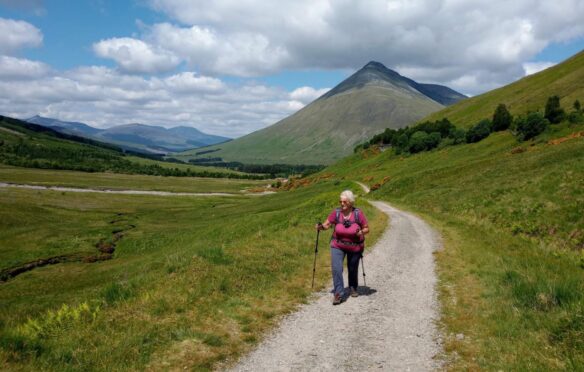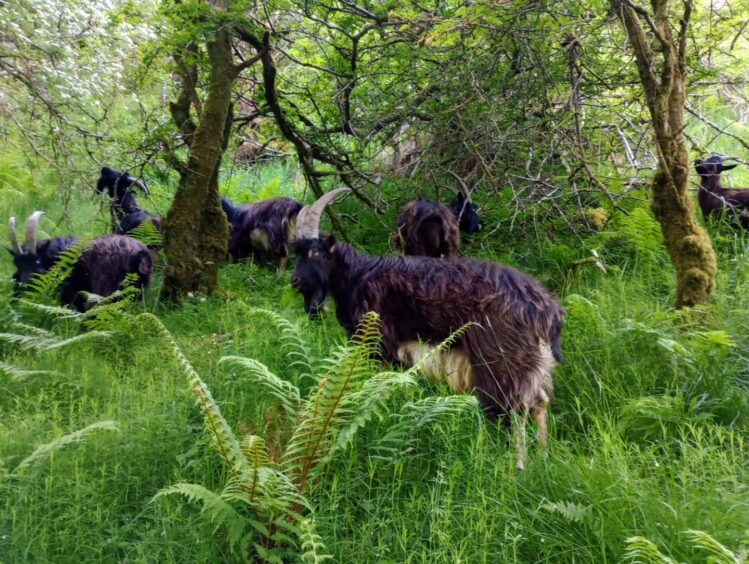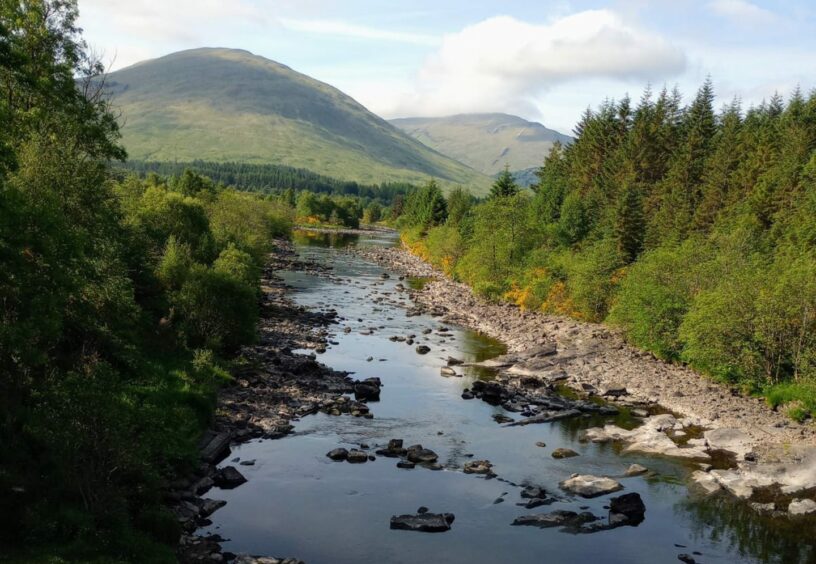In 2014, Noreen Smith lost most of her sight in her right eye. Three years later, despite injections for macular degeneration, her left eye also became severely limited.
-
Some Press and Journal online content is funded by outside parties. The revenue from this helps to sustain our independent news gathering. You will always know if you are reading paid-for material as it will be clearly labelled as “Partnership” on the site and on social media channels.
This can take two different forms.
“Presented by”
This means the content has been paid for and produced by the named advertiser.
“In partnership with”
This means the content has been paid for and approved by the named advertiser but written and edited by our own commercial content team.
Now in her 70s, it would have been easy for Noreen to sit back and avoid major challenges. But the keen hillwalker was determined it would not stop her from enjoying her favourite treks.
Using walking poles to gauge the paths, a magnifying glass for directions and a trusty set of binoculars to read signs, Noreen has continued to climb and ramble her way around Scotland.
Inspired to tackle the West Highland Way
That can-do spirit was particularly in evidence this year when she took on the West Highland Way after her sister Eleanor said she would love to tackle the beloved trail.
It would be a decent challenge for people a few decades younger than the 77-year-old. But Noreen, from Glasgow, makes light of the difficulties and focuses entirely on the beauty and fun of the walk.
In the end Eleanor was only able to take part in the later stages of the trek but Noreen was joined by her friend Valerie Topping for the whole walk.
They accomplished the feat in just nine days, negotiating steep ascents, as well as some wild goats along the way.
The first leg of their journey took them to picturesque Drymen before a trek up the shores of Loch Lomond through Balmaha, Rowardennan and Inversnaid, then on to Inverarnan. From there they took in Crianlarich, Tyndrum, Bridge of Orchy, Glencoe and Kinlochleven before finally arriving at Fort William.
Tough climbs and unexpected companions
Looking back Noreen remembers some particular challenges.
“It was really difficult from Inversnaid to Inverarnan,” she says. “That part of the West Highland Way has a lot of big rocks and scrambling. It was the biggest challenge because of the rocks and my eyesight. Trying to stick to the paths was difficult because people make their own wee routes. At that point I was walking about one mile an hour.”
Noreen and Valerie didn’t reach The Drovers Inn at Inverarnan until 8.30pm after starting out at 8am that morning. She adds that she was “so tired I didn’t feel like eating”. But it was here that she came across those surprise fellow explorers.
Noreen says: “There were wild goats. Normally you don’t see them but they were out on the trek grazing. We were told that in Rob Roy McGregor’s day, goats lay in front of a cave he was hiding in nearby and the soldiers had walked on by, so now they’re protected. There was a Swiss couple who were a bit worried. They asked if they would attack them but I said, ‘Not at all, feel free to walk right past them’.”
Scenic charm of the West Highland Way
Other highlights of the walk include the climb up the Devil’s Staircase as they made their way from The Kingshouse Hotel in Glencoe to Kinlochleven.
Noreen remembers: “It was lovely up there. The views were terrific out over Glencoe and we got some very good pictures of the Buachaille Etive Mor with the rising sun on it.”
Not one to rest on her laurels, Noreen has more treks in the pipeline.
She says: “I try and go out every weekend. If things work out next year, I may try and do the Rob Roy Way from Drymen to Pitlochry. I’ve a friend who has given me the information on it. It’s about 80 miles. I’ve also got some information on The Hebridean Way.”
Sight Scotland Veterans are a constant source of support
Over recent years Noreen, who was an army nurse in the 70s, has been supported by Sight Scotland Veterans. The charity has provided equipment to aid Noreen on her walks as well as assistance with planning.
She says: “Sight Scotland have been very good. They gave me binoculars which I used along the way. They were excellent and helped me to pick out some of the paths. They were also good for looking at the signs along the way.
“They help with planning and give me some good trails to do with the directions set out in block capitals. I got a very good route from them for a trek up Doon Hill at Aberfoyle. They also gave me two magnifiers for reading. There’s a small one that’s good for looking at maps.”
Sight Scotland Veterans, which was called Scottish War Blinded until 2020, was set up in 1915 to help people who lost their sight, or sustained a visual impairment, during National Service.
It is for anyone who has served in the Armed Forces and has lost all, or part, of their sight – whatever the reason.
Sight Scotland Veterans uses the latest equipment and technology to improve the lives of veterans with sight loss. Yet not everyone who is entitled to help knows about the charity.
The charity can assist with signposting, advice, adaptations at home and providing free equipment to help you live life more independently.
Find out about the work of Sight Scotland Veterans.


